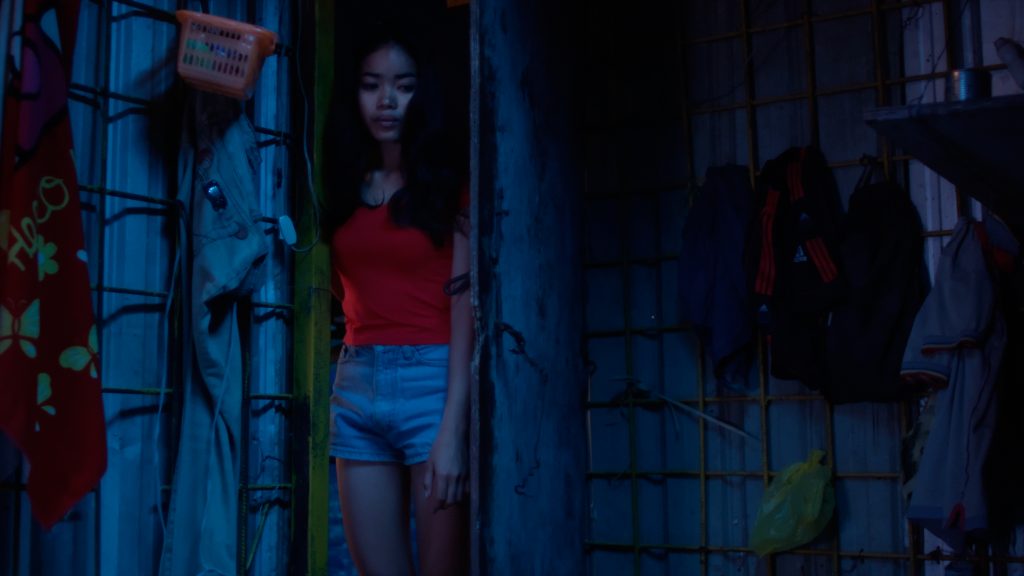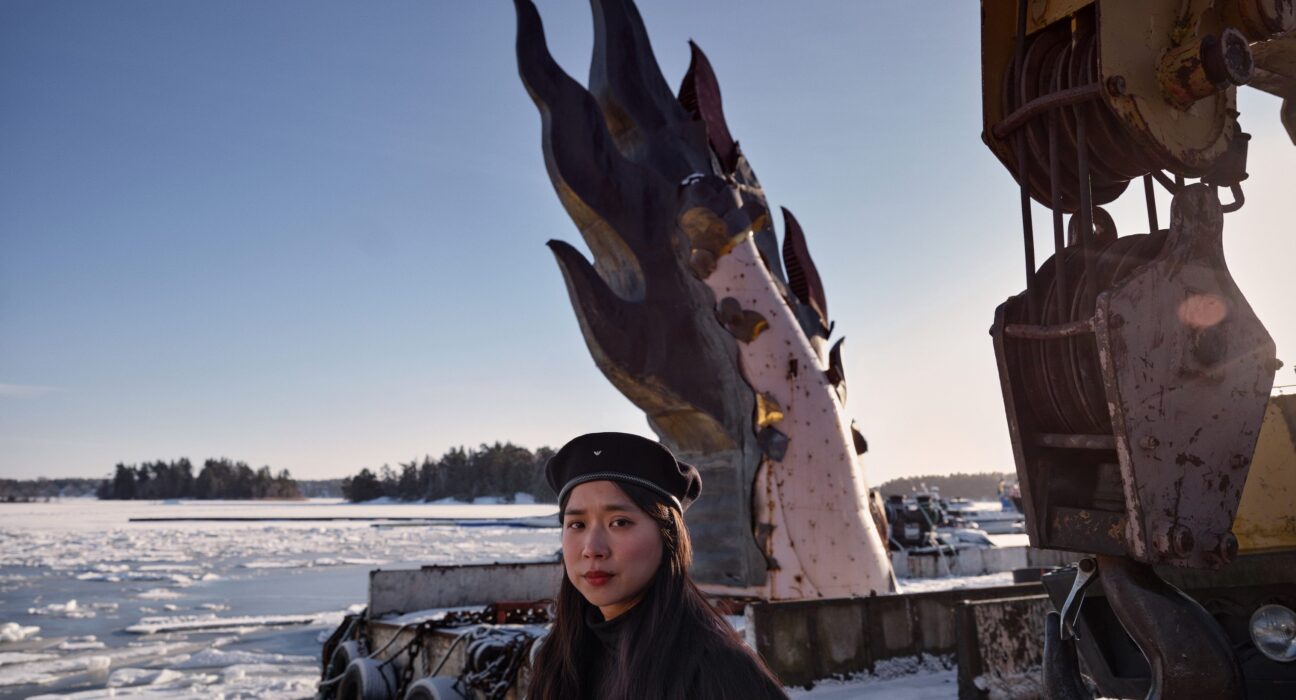A one-day event set to take place at the highly anticipated 60th Venice Biennale on Saturday, April 20—the first day the event will be open to the public—sums up a major feature of this edition’s art extravaganza: a major presence of Asian artists.
Titled “A World of Many Worlds,” the event is presented by the Asia Forum and the London-based Asymmetry Art Foundation, which also supports the collateral event with the Bagri Foundation. It will explore the broad topic of “pluriversal possibilities of a global Asia.” According to Michèle Ruo Yi Landolt, director of Asymmetry Art Foundation and one of the event’s co-organizers, the assembly is based loosely on a traditional conference model “but interjected by performances, screenings, and interventions.” It features a stellar line-up of artists and arts practitioners of Asian heritage will table an opportunity to “reconsider what it means when we talk about Asia and all these different perspectives on Asia.”
Perhaps there’s no better occasion to platform a much-needed conversation about Asia than at this year’s Venice Biennale—a typically Eurocentric, or at least Western-focused, event—in which a noticeable number of artists who are based in Asia or of Asian descent are included. Across the city, collateral events also feature an exciting lineup of shows and exhibitions that aren’t just presenting big names, but also shining a spotlight on artistic talents from regions that have long been overlooked and underrepresented. There’s also an abundant number of exhibitions starring Asian artists staged across the City of Water outside the biennial’s official program.
Increased exposure
The increasingly global art world is “constantly looking for a new trend, and this is even more obvious at the Venice Biennale in recent years,” said Gladys Lin, an independent art consultant who works between Taipei and New York. Last edition’s spotlight on women artists, for example, helped to bring focus to a historically marginalized group, Lin noted. As more biennials, museums, and other art organizations attempt to decenter Western mainstream perspectives, “Asian artists and artists from the Asian diaspora are increasingly [becoming] an important component in this discussion around diversity and inclusion,” Lin said in a phone interview. “We will see more of their exposure.”

Davy Chou, Diamond Island (2016), on view at the exhibition “Your Ghosts Are Mine, Expanded Cinemas, Amplified Voices” by Qatar Museums, featuring works by more than 40 film and video artists from Southeast Asia, Africa, and the Middle East. Courtesy of exhibition organizers.
Shanghai-based gallerist Enrico Polato, who has spent more than two decades in China and opened Capsule Shanghai in 2016, launched a new space, Capsule Venice, ahead of the biennale to capitalize on the opportunity to promote the gallery’s program to an international audience. Polato, who studied in Venice, said the inaugural group show in February has already helped to build a stronger foundation for Asian art in the city.
“I hope to contribute to the promotion of our local Asian artists through our new Venice outpost,” Polato noted. “Considering that Asian collectors are a key component shaping the current global market for art, collaborations with local artists are strategic for many galleries to connect to the local scene.”
The gallery has just opened its second exhibition, “Hovering,” a group show curated by Manuela Lietti featuring 13 international artists, including several with Asian roots, running through June 23 to coincide with the biennale.
Regional diversity
In comparison to the 2022 biennale, which featured about a dozen Asian artists and artists of Asian descent, Brazilian curator Adriano Pedrosa has included nearly triple that number for his edition, titled “Foreigners Everywhere.” They hail from Asia-Pacific to East Asia, Southeast Asia, South Asia, and beyond.
Some Asian countries have a long history of participation in the biennial, such as South Korea, whose Korea Pavilion marks its 30th anniversary this year. As East Asia’s culture powerhouse of the 21st century, Korean artists are featured in a total of nine exhibitions, including its national pavilion featuring Koo Jeong A and four official collateral shows. The Korean-born Sook-Kyung Lee, director of the University of Manchester’s Whitworth Art Gallery in the U.K., is the curator of the Japanese Pavilion exhibition featuring the artist Yuko Mohri.
An archival image of Korean Pavilion in 1995, T’ou Amongst Wandering Planets: Spirit of the Korean People by Soo-Cheon, Jheon, Courtesy of ARKO Art Center.
“The robust presence of Korean artists, alongside their Asian counterparts, reflects not only the recent expansion of the Asian art market but also the culmination of visionary efforts by curators and artists advocating for non-Eurocentric perspectives since the 1990s,” said Jade Keunhye Lim, artistic director of the Korean Pavilion’s “Every Island is a Mountain,” and general director of Seoul’s Arko Art Center, which commissioned the Korean Pavilion. Moreover, the exponential growth of the number of visitors to the Korean Pavilion from 2013’s 149,181 to 566,000 in 2022 “exemplifies how Asian art has meaningfully contributed to fostering inclusivity and diversity in the global art scene,” Lim added.
Of some 30 official collateral events, nearly one-third of them are Asia-related. Besides the regular appearances of Taiwan (artist Yuan Goang-Ming), Hong Kong (Trevor Yeung), and Macau (Wong Weng Cheong) exhibitions, “The Spirits of Maritime Crossing,” presented by the Bangkok Art Biennale Foundation and co-hosted by One Bangkok, is one to watch.
Jakkai Siributr, There’s no Place, (2020). Ongoing and geographically mobile collaborative ‘call-and-response’ embroidery installation, hand embroidery on fabric, dimensions variable. Photo by Markus Gortz. Collection of the Artist. Courtesy the Artist. © Jakkai Siributr
Curated by Apinan Poshyananda, artistic director of the Bangkok Art Biennale, the show features a film from which the exhibition derives its title starring the performance artist Marina Abramović. It was created by Thai dance artist and choreographer Pichet Klunchun and Poshyananda, who described Abramović as the “icon of foreign, diaspora, and displacement.” The exhibition also features 40 works by 15 artists from across Southeast Asian including Cambodia, Laos, Indonesia, Malaysia, Myanmar, Thailand, Vietnam, the Philippines, and Singapore. None of the artists are featured in the main exhibition, and the countries represented do not have pavilions with the exceptions of the Philippines and Singapore.
The Southeast Asian presence within the national pavilions has long been affected by budget constraints and governmental control, according to Poshyananda. He noted that the Thai pavilion, which first participated 20 years ago, has suffered from years of military dictatorship and budget cuts; Thailand has not participated since 2017.
“As the oldest and most grandiose international event, the Venice Biennale continues to take center stage despite criticism of its outdated nation-based platform and the inherent power structure of rich and poor pavilions,” Poshyananda continued. “Our exhibition can be a new model for future presentation that shifts away from national format and restrictive government control.”
Diasporic connections
Among the biennial’s national pavilions, several Western countries have selected artists of Asian heritage to represent them at this “Olympics of the art world.” At the Giardini, the Nordic Pavilion’s exhibition, “The Altersea Opera,” for example, features artists of East Asian heritage for the first time. The project is conceived by Lap-See Lam, a Swedish-born artist of Hong Kong Cantonese descent. She collaborates with several artists from all three Nordic countries, including the Norwegian-born composer Tze Yeung Ho, who shares the same heritage as Lam, and Kholod Hawash, an Iraq-born textile artist based in Espoo, Finland.
Sandra Gamarra Heshiki, Enlightened Racism I (Painting of Castes
and Reproductive Work) (2024). Oil and imitation gold leaf on canvas. 175 x 310 cm. Photo credit: Oak Taylor-Smith.
The Spanish Pavilion, also in the Giardini, features an exhibition titled “Pinacoteca migrante,” which tackles the legacy of Spanish colonization spanning from Latin America to Southeast Asia. It is helmed by the Peru-born, Madrid-based artist Sandra Gamarra Heshiki. Not only is this the first time that Spain features a non-Spanish born artist at its national pavilion in the Giardini, Gamarra Heshiki is also a mixed-race woman of Peruvian-Japanese heritage.
The presentations of both artists, also featured in the Asia-themed conference “A World of Many Worlds” on April 20, will bring the forgotten histories of Asian migration back to the limelight, echoing the idea of “global Asia.”
The Venice Biennale runs from April 20 through November 24, 2024.
Follow Artnet News on Facebook:
Want to stay ahead of the art world? Subscribe to our newsletter to get the breaking news, eye-opening interviews, and incisive critical takes that drive the conversation forward.

